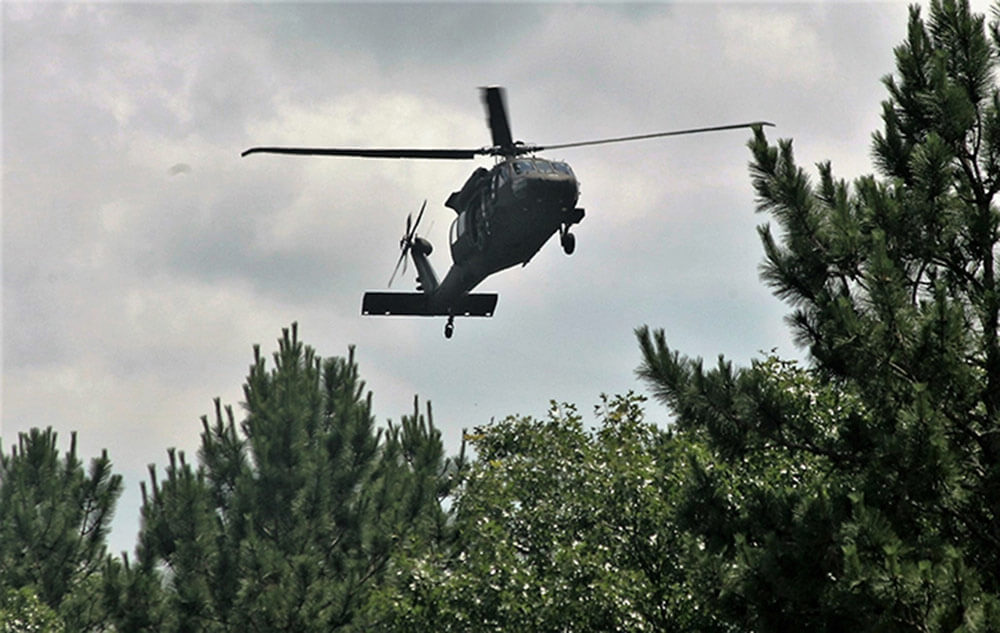A Wisconsin Army National Guard UH-60 Black Hawk helicopter crew rescued two men stranded in the Eldorado Marsh along the Fond du Lac River last Sept. 9 after the men became disoriented on a kayak trip.
The kayakers lost their way in the thick marsh and reached the point of exhaustion before calling 911 to seek help. The isolated nature of the marsh and its terrain made a land rescue nearly impossible, prompting local rescue crews to reach out to Wisconsin Emergency Management to seek assistance.
The Wisconsin National Guard was ready and had a helicopter in the air within 90 minutes of receiving the call. Fifteen minutes later, the West Bend-based flight crew was hovering over the Fond du Lac area searching for the kayakers, who had made cell phone contact with rescue crews on the ground.
With sunlight quickly diminishing and the kayakers stranded in a dark marsh, the crew asked first responders to relay a message to the kayakers to turn on their cell phone flashlight.
“As soon as they did that, we spotted them immediately,” said CW4 Jason Wollersheim, the pilot-in-command of the mission, assigned to Company C, 1st Battalion, 168th Aviation. “It stands out pretty good when you’re out in a marsh with no other lights around and you’re looking through NVGs [night vision goggles].”
Once the men were spotted, the pilots moved into position over them and lowered one of the crew chiefs into the marsh using a hoist and a jungle penetrator, also known as a rescue seat. The crew chief, SGT Caleb Estenson, quickly realized the marsh’s surface was not suitable for using the jungle penetrator to extract the two men.
The darkness, lack of reference points, floating bogs, cattails and other marsh material made it difficult to find solid reference points from which the crew could maintain a steady hover over the marsh, said SSG Bobby Gibson, a crew chief and hoist operator with the 168th. Fortunately, the crew was able to overcome the obstacles and ultimately extracted the kayakers safely.
CW4 Wollersheim, a Fond du Lac native with more than 21 years of flight experience, said it was an honor to give back to the community in which he was born and raised. He noted that the training Wisconsin Army National Guard aviators have gained in recent years – in their federal mission as the Army’s primary combat reserve – has helped them fulfill their state mission as the first military responder. Three of the crew members aboard the rescue flight had returned from deployments to Afghanistan less than a year earlier, and the fourth returned from Kuwait less than two years earlier.
For SGT Estenson, it was a rewarding experience to put his training to use and drop into the marsh to assist the stranded men.
“You couldn’t really tell what the ground was like in this pond area where they were at,” he said. “But once I started to sink in right away when I first got in there, I was really nervous, honestly.”
According to the Wisconsin National Guard’s senior Army aviation officer, LTC Matthew Strub, the Sept. 9 rescue is likely the first real-world hoist extraction a Wisconsin National Guard crew has completed in the state.
“The training is universal,” LTC Strub said. “We train for the worst-case scenario so that no matter what mission is sent our way, we’re ready to execute.”
By CPT Joe Trovato, Wisconsin National Guard



